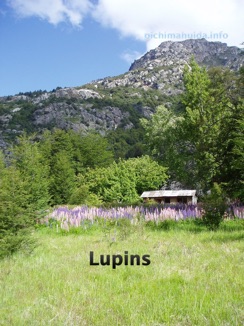
Invasive species
We do not focus on “introduced” species or neophytes, as it is a novel, reconstructed ecosystem, constantly reshaped in the course of the last 100 years. The threshold and timelines between “introduced” and “native” is difficult, if not impossible, to establish, like a baseline for their control.
The major “introduced” species is European-origin people, leading to other “exotics”.
The term “exotic” or “introduced” usually means recent introductions. As no information exists on the ecosystem of the beginning of the XX century (pre-fires), it is difficult to certify that some “native” fauna and flora are not results of these fires and European-originated colonisation.
The damaging character of the invasiveness of some species is greatly facilitated by the deplorable state of the ecosystem, brutal recent annihilation of “native” species, continuous human pressure and climate change.
Invasive species in the PPAP, requiring control:
Plants:
The most damaging: Rosa mosqueta (“exotic” or “native”, depending on the baseline)
It is linked to cows’ presence: in the PPAP where previously there were only sheep, there is no rosa mosqueta. If cows were grazing - rosa mosqueta appeared. Confirmed by work of interns from Chilean universities. Main possible entry points of cattle into the PPAP now, and therefore threat of transport of rosa mosqueta seeds - the border with the Laguna San Rafael national park.
Considered as valuable “native Chilean rose” in Europe (see skin treatments made of rosa mosqueta). Still planted in the region for its fruit.
Rosa mosqueta: una planta invasora que compite con la vegetación nativa | GEFEEI.pdf
Rosa_canina-eglanteria-multiflora.pdf ;
Lodgepole pine = Pinus contorta (“exotic”): planted extensively in
the region by forestry business until recently, not any longer
due to its invasive character;
Retamo = Ulex europaeus (partly “exotic”);
Calafate rastrero = Berberis empetrifolia (part of “native” cycle);
Calafate = Berberis mycrophylla (part of “native” cycle);
Chapel, meki, mata negra = Escallonia virgata
(part of “native” cycle);
Choco = Lupinus spp (“exotic”).
Insects:
Yellowjackets, wasps (“exotic”).
European bumblebee (“exotic”).
Animals:
Stray dogs are becoming a real problem in the region, severely damaging the originally wild animals.
Mice (“native”) : hantavirus carrier.
Salmon, escaped from fish farms : unfit for human consumption (antibiotic), pose human health risk, creating a sanitary crisis.
Some other invasive species like Aromo Australiano, rainbow trout, mink, are found in the region but not in the APPP.
Invasives not requiring control:
Chaura = Gaultheria Phillyreifolia and Gaultheria spp (part of “native” cycle);
Murtilla = Pernettya mucronata part of “native” cycle).
Introduced non-invasive species, not requiring control:
Horses - energize the earth, as in acupuncture, according to Rudolf Steiner's biodynamic theory, help with plant energy;
European hare - important link in the foodchain of the local foxes.
With invasives on the menu, an endangered bird thrives | Anthropocene.pdf

